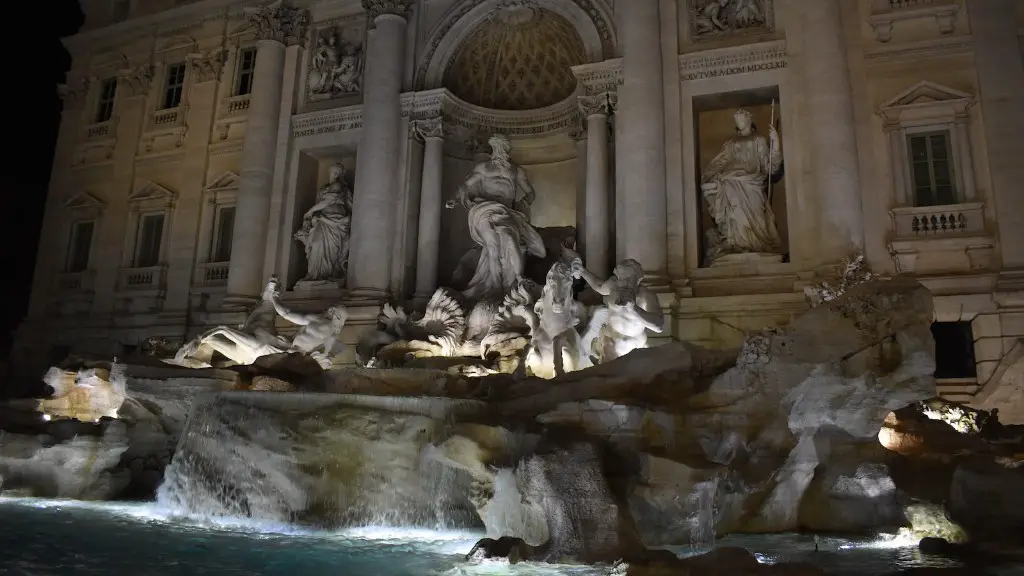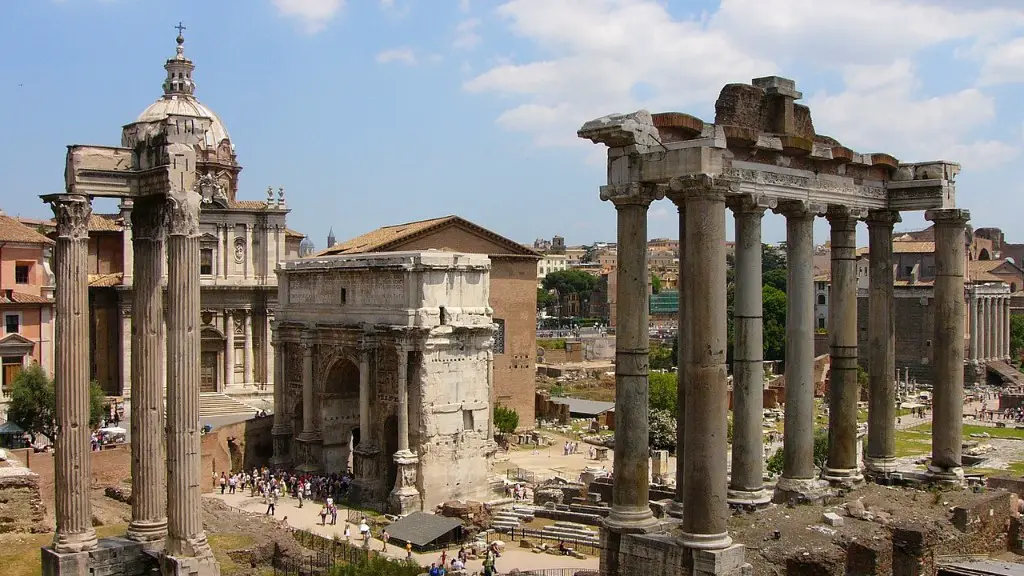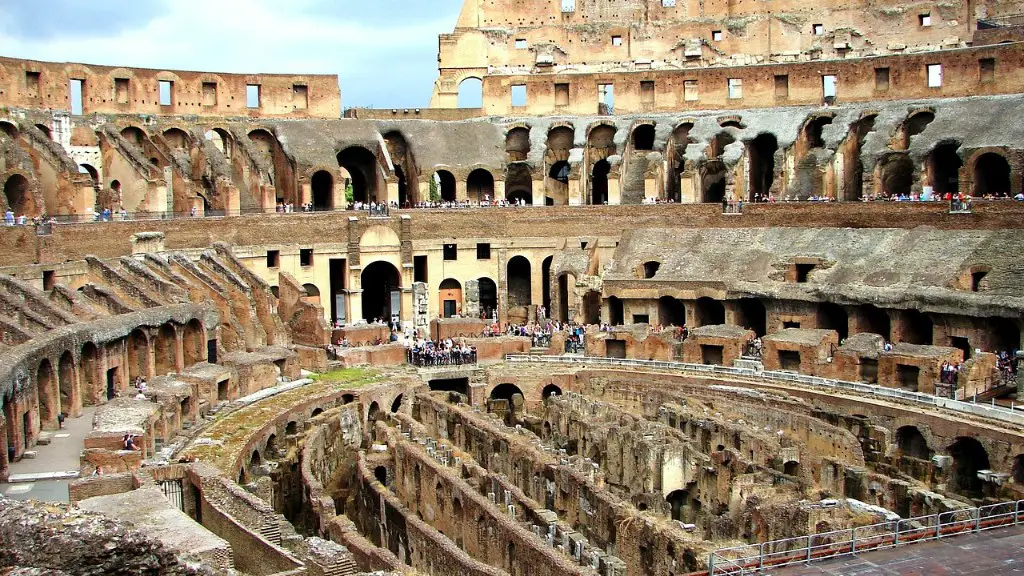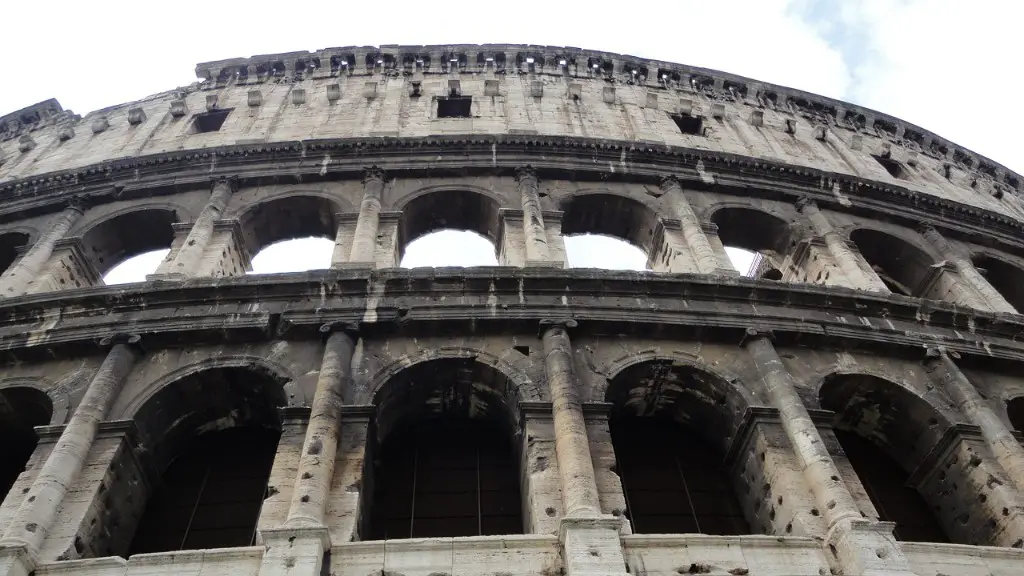Rome began as a tiny village on the Tiber River in central Italy. According to legend, it was founded in 753 b.c. by Romulus, the son of the war god Mars. The early Romans were a hardy people who had to fight for their survival against the Etruscans to the north and the Greeks to the south. After years of struggle, they finally overthrew the Etruscan monarchy in 509 b.c. and set up their own government. The Romans were tough and determined fighters, and they quickly began to expand their territory. By 300 b.c., they had conquered all of Italy.
The Romans were also very good at organizing their conquered territories and making them into provinces. Each province was ruled by a governor who was responsible for maintaining order and collecting taxes. The governors were supervised by a Senate, a group of wealthy landowners who advised the Roman leaders. The Senate was initially a powerful check on the power of the Roman leaders, but over time it became increasingly corrupt.
The Romans were a militaristic people and their army was one of the best in the world. It was divided into legions, each of which was made up of 6,000 soldiers. The legions were further divided into
The Roman Republic began to expand its territory around the Mediterranean Sea after the Punic Wars with Carthage. During the wars, Rome had gained control over Sardinia, Sicily, and Corsica. Carthage was forced to give up its control of Spain. Rome began to establish provinces in these newly conquered territories. This led to increased trade and prosperity for Rome. Rome also expanded its power by forming alliances and friendships with other countries.
How did ancient Rome rise to power?
The military played a key role in Rome’s success. The Roman army was highly trained and disciplined, and was known for being the best army in the world. With their success in war, the empire was able to expand its control over 3 separate continents including Asia, Africa, and most of Europe.
The Roman Empire was one of the most powerful empires in the world for centuries. It was able to conquer and hold onto vast territories by using its military might and by allowing conquered peoples to govern themselves. This desire to expand had deep historical roots and helped make the Roman Empire the great power that it was.
How did the Romans expand their territory and consolidate and maintain their power
Rome became a powerful empire in the Mediterranean region by conquering new territories through wars, such as the Punic Wars. By offering Roman citizenship to the people they conquered, Rome was able to incorporate them into their society and maintain control.
The more wealthy and powerful the Romans became, the more able they were to further expand their empire. The Romans were not content with conquering land near to them. They realised that land further away might also have riches in them that would make Rome even more wealthy. Hence their drive to conquer Western Europe.
When did Rome rise to power?
The Roman Empire was one of the most powerful empires of its time. It was founded by Augustus Caesar in 31BC and came to an end with the fall of Constantinople in 1453CE. The Roman Empire was a major political and economic force during its time. It was a major cultural force as well. The Roman Empire was responsible for the spread of Christianity throughout Europe and the world. The Roman Empire was a major military power as well. The Roman Empire was an extremely advanced society, with a high level of technology and engineering.
The Romans were a major political and military power in the Mediterranean region for centuries. They gradually conquered the Italian peninsula, extended their dominion over the entire Mediterranean basin, and expanded their empire into continental Europe. Under Pompey the Great and Julius Caesar, Rome’s influence was extended over Syria, Jerusalem, Cyprus, and Gaul.
When did Rome expand its territory?
Rome began expanding its territory shortly after the founding of the Roman Republic in the 6th century BC. However, it wasn’t until the 3rd century BC that Rome started to expand outside of the Italian peninsula. Since then, Rome has continued to grow and expand its territory, becoming one of the largest empires in history.
The Roman military policies helped to expand the empire by providing soldiers with training in latest tactics of war and by equipping them with the latest weapons. One of the key responsibilities of the legionnaires was to defend the empire and not to engage in conquest. This allowed for a more stable and secure empire.
Who expanded the Roman Empire the most
Trajan was a very successful Roman Emperor who ruled for 19 years. During his reign, he expanded the Roman Empire to its farthest territorial limits up until that date. He was a great military leader and conquered many new territories for the empire. He was also a very just ruler and was beloved by his people.
The Po and Tiber River Valleys are some of the most fertile soil in all of Rome. This allowed the ancient Romans to grow a diverse selection of crops, such as olives and grains. This, in turn, allowed the empire to have a food surplus to feed its population and trade with other societies. The empire also used the resulting wealth to expand its military strength.
How did Rome expand its territory and maintain control over it quizlet?
Rome expanded its territory through military conquest and maintained control by just treatment of those conquered. This allowed them to keep a tight grip on their empire and prevented any revolts.
The Roman Empire developed because of Caesar’s ineffective dictatorship and assassination, civil war, and Octavian’s rise to power. After defeating Gnaeus Pompeius Magnus (Pompey the Great), Julius Caesar declared himself dictator of Rome. He ruled as dictator for a short time before being assassinated in 44 BCE. Caesar’s death led to a civil war between his supporters, who became known as the Caesarians, and the opponents of his rule, who became known as the Pompeians. The Caesarians were eventually victorious, and their leader, Octavian, became the first Roman Emperor.
How did the Roman Empire expand over time quizlet
How did the Roman Empire expand over time? The Roman Empire expanded over time because they had different leaders who conquered lands and expanded territory. Rome originally started as a small village on the Tiber River in central Italy. It rose to become one of the largest empires in history. The Roman Republic was founded in 509 BC, and grew steadily through conquest and alliances. The Roman Empire reached its height under Emperor Constantine in the 4th century AD. Christianity also became the dominant religion at this time. The empire split into eastern and western halves in 395 AD, due to increasing cultural and political differences. The western half fell to Germanic invasions in 476 AD, while the eastern half continued to thrive. The Roman Empire was one of the most powerful empires of all time, and its legacy can still be seen in modern times.
The Roman Empire was founded in 625 BC by Romulus, the legendary founder of Rome. The Roman Republic was established in 509 BC, when Rome’s first king, Lucius Tarquinius Superbus, was overthrown by the Roman people. The Roman Empire began in 31 BC when Octavian, the grandnephew and heir of Julius Caesar, defeated Mark Antony and Cleopatra at the Battle of Actium. In AD 476, the last Roman emperor, Romulus Augustus, was overthrown by the Germanic chieftain Odoacer. The Roman Empire was then divided into two parts: the Western Roman Empire, which collapsed in 476, and the Eastern Roman Empire, which survived until 1453.
How did the Romans control their vast territories?
The control of an empire of this scale depended on a tightly controlled system of administration, a strong and disciplined army, and excellent communications. Provinces of the empire were controlled by Roman governors appointed by the emperor. The administration of the empire was overseen by a series of imperial bureaucrats, who were responsible for maintaining order and collecting taxes. The army was responsible for defending the borders of the empire and keeping the peace within its territories. Communications were maintained by a network of roads and aqueducts, which allowed for the rapid transport of information and troops.
The Roman empire was one of the largest empires in history. At its peak, it controlled 2 million square miles of territory. This many people and this much land required sophisticated administration and technology. Hundreds of miles of Roman roads connected the empire, linking its cities, allowing its armies to march, and facilitating trade.
What problems did Rome face by expanding
It is clear that the Roman Republic was not able to sustain its growth and collapsed eventually. A number of factors can be attributed to its fall, including economic problems, government corruption, crime and private armies, and the rise of Julius Caesar as emperor. While Rome’s expansion resulted in money and revenue for the Republic, it was also clear that this growth was not sustainable in the long term. Government corruption and private armies led to increased instability, while economic problems and the rise of Julius Caesar as emperor ultimately proved to be the Republic’s downfall.
Rome was able to grow and dominate the known world due to several geographic advantages. The first was protection from invasion. Two mountain ranges, the Alps and the Apennines, helped to protect Rome from invading armies. The second was the fertile land. The land around Rome was very fertile, which allowed the population to grow. The third was the diversity of population. Rome had a diverse population, which made it a center of trade.
Conclusion
Ancient Rome expanded its territory and power through a combination of military conquest and alliances with other states. Rome became a powerful state in the central Mediterranean through its military victories over its rivals, particularly the Etruscan city-states to the north. Rome also formed alliances with other states, such as the Latin League, which helped it to expand its territory. Over time, Rome became the dominant power in the Mediterranean and expanded its territory further through its conquests of Sicily, Greece, and North Africa.
Ancient Rome expanded its territory and power through a combination of military force and alliances with other states. Rome was able to conquer new lands and make alliances with other states by using its military power to protect them from other enemies. Additionally, Rome gained new territory and power through economic and political alliances with other states. Rome used its economic power to buy land and influence other states, and its political power to make alliances and treaties with other states.





